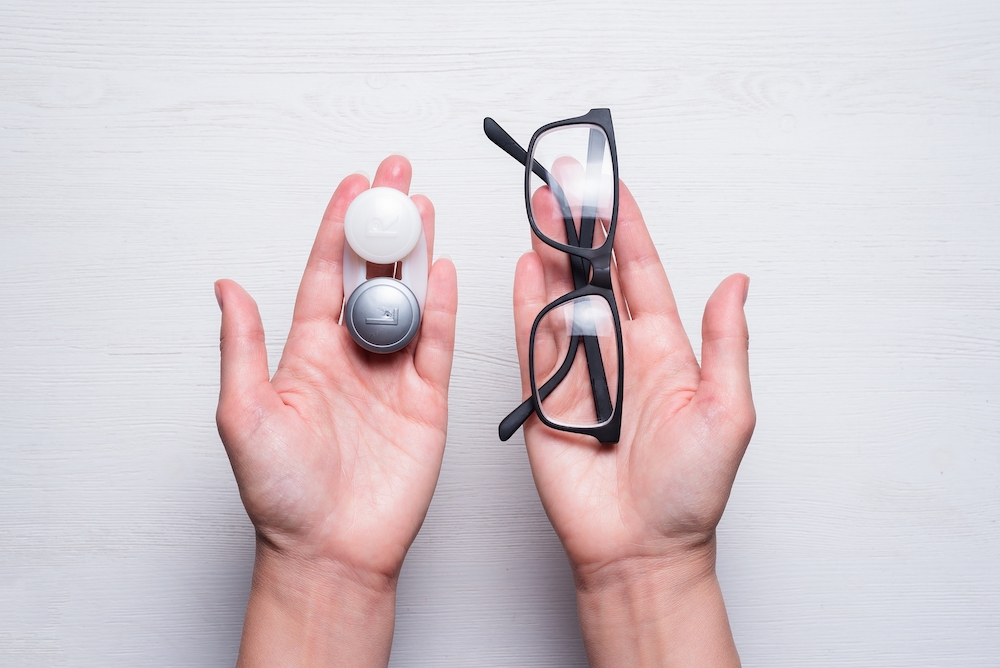
For people that require vision correction, the options include glasses, contact lenses, and in some cases, surgical intervention is an option. Correcting refractive errors such as myopia, hyperopia, and astigmatism requires a refraction to be performed to determine how light best focuses onto the retina. This is your eyeglass prescription.
From an eyeglass prescription, the appropriate diagnostic contact lens can be determined. There are rigid and soft contact lenses, requiring different fitting procedures to determine what's most appropriate for your visual demands and wearing schedule. Because contact lenses sit on the cornea, the fitting process is important. We start with evaluating the corneal surface and tear film, and then corneal curvature (topography), which helps us determine the diameter and curvature of the contact lens. We then use your eyeglass prescription to determine which lens power is required. Because eyeglasses sit further away from the cornea, that distance has to be taken into account when determining the power of a contact lens.
Once a diagnostic contact lens is on the eye, our optometrists evaluate the overall fit of the lens, looking for centration, movement, and rotation. Vision through the contact lens is evaluated to confirm the best power. At this point patients are scheduled for follow-up, allowing them the opportunity to wear the lenses in their environment.
There are many different contact lens materials, each having different components, parameters, water content and oxygen transmission.
There is a federal law that requires a valid contact lens prescription to order contact lenses.
Additional Specifications for Contact Lenses
There are other specifications that affect contact lenses. These are the lens diameter, base curve, lens brand, and expiration date. They are not present on an eyeglass prescription. They are, however, important when fitting contact lenses.
Lens Diameter
The abbreviation that matters for this measurement is DIA. It specifies the overall size of the lens and the base curve. It determines how the lens fits. There is no one-size-fits-all. For soft contacts, they range from 13.5 to 14.5 millimeters. For hard contacts, they range from 8.5 to 9.5 millimeters.
Base Curve
Doctors use the abbreviation BC for this measurement. It refers to the curvature of the back surface of the contact lens. A proper base curve measurement should follow the shape of your cornea. It should not be too tight or too loose. This allows your contact lens to stay in place.
Lens Brand
Contact lens prescriptions include the brand of the lenses, unlike in eyeglasses. It is because different brands use different materials. Each material offers different breathability levels. Breathability refers to the specific degree to which oxygen can permeate the material.
It is especially important if you want extended wear contact lenses. These will allow you to sleep with your contacts on. You need to note this, as it means you cannot switch brands without a proper fitting.
Expiration Date
Because contact lenses are a medical device, and the risk of blindness from over-wear and/or inappropriate wear and handling is real, prescriptions for contact lenses expire at one year. Eyeglass prescriptions are good for two years.
For more information on contact lenses and eyeglass prescriptions, contact Williamsburg Eye Care at our office in Williamsburg, Virginia. You can call (757) 564-1907 to book an appointment today.






